CBP Faculty
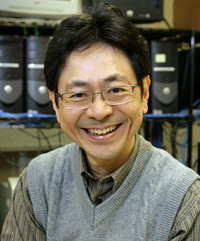 Katsushi Arisaka
Katsushi Arisaka
Webpage
Department of Physics & Astronomy
Office: 4-145 Knudsen
Phone: (310) 825-4925
Contact
My prime interest is to understand the origin of the Universe, life and consciousness altogether by yet-to-be-discovered physics laws. In particular I am interested in how the Universe was evolved at its earliest stage. I have been conducting several research studies in Europe and in the U.S.
Educational Background:
Ph.D., University of Tokyo, Japan. 1985
Research Investigator, University of Pennsylvania. 1985-1988
Assistant Professor, Department of Physics UCLA. 1988-1991
Associate Professor, Department of Physics UCLA. 1991-1995
Professor, Department of Physics and Astronomy UCLA. 1995-Present
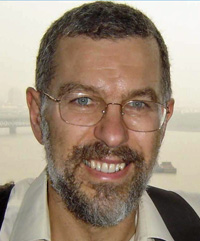 David Bensimon
David Bensimon
Webpage
Dept of Chemistry & Biochemistry
607 C.E.Young Dr. East
Los Angeles, CA 90095-1569
Contact
My research interests span from single molecule biophysics to evolution via the study of development. I have been studying the mechanical properties of single DNA molecules for the past 20 years, using those as a means to investigate its interactions with a variety of structural proteins and molecular motors. Recently, we discovered a new means to sequence DNA by mechanically unzipping it and detecting the hybridization of complementary oligonucleotides as they transiently block its re-zipping. In the past 5-6 years I have been interested in the study of physiology at the single cell level. We have developed means to control the activity of proteins and other biomolecules at the single cell level, which gives us the opportunity to perturb locally and temporally various physiological pathways which we are currently studying (somitogenesis, learning, cancer). Finally, I have been interested in experimental evolution and bacterial ecology. We have recently shown that the dynamics of exchange of public goods in a bacterial colony is similar to a continuous version of the Tit-for-Tat game.
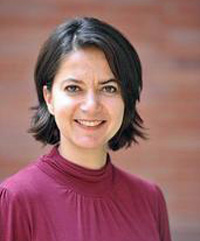 Dolores Bozovic
Dolores Bozovic
Webpage
Box 951547
Los Angeles, CA 90095
310-825-6176
Contact
The Bozovic lab focuses on problems at the interface between physics and sensory neuroscience. In particular, we study how auditory and vestibular systems perform mechanical sensing down to the nanometer level. The main topics are: (1) nonlinear dynamics of response by individual elements - the hair cells, (2) synchronization of movement by inter-cell coupling, and (3) self-tuning in response to external stimulus.
The experiments require measuring bundle motility with nanometer-level precision, in preparations that preserve the biological function of the cells. Our measurement system includes parallel-tracking ability, allowing us to explore synchronization between active motility of different hair cells. We interpret our findings in the context of nonlinear dynamics and bifurcation theory, to explain the nanoscale sensitivity displayed by the biological system.
Educational Background:
Stanford University, BS in Physics, 1995
Harvard University, PhD in Physics, 2001
Postdoctoral Associate, Sensory Neuroscience, Rockefeller University, 2001-2005
Positions Held:
Dept. of Physics and Astronomy and California NanoSystems Institute, UCLA
Assistant Professor, 2005-2011
Associate Professor, 2011-2015
Professor, 2015-present
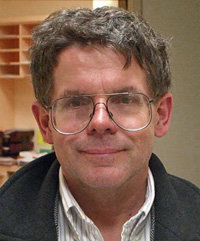 Robijn Bruinsma
Robijn Bruinsma
Office: 3-120 Knudsen
Phone: (310) 825-8539
Contact
Education: Vrije Universiteit, Amsterdam, B.S. in Physics.(19.74).
Rijks-Universiteit Utrecht, M.S. in Physics (1976).
University of Southern California., Ph.D. in Physics (1979).
Positions Held: Postdoctoral Fellow, Harvard University 1979-1980.
Research Associate, Brookhaven National Lab.1980-1982.
Visiting Scientist, IBM Research Center, Yorktown, 1982-1984.
Assistant Professor of Physics, University of California, 1984-1988.
Associate Professor of Physics, University of California, 1988-1990.
Chair, Theoretical Physics for the Life Sciences, Leiden University, 2000-2001.
Full Professor of Physics, University of California, 1990-2008.
Distinguished Professor of Physics, University of California, 2008-2012.
Honors: Pierre et Marie Curie Visiting Professorship (E.S.P.C.I.) (1994)
Rothschild Foundation Fellowship (1996)
Distinguished Lecturer, College de France (1999)
Fellow American Physical Society (2001)
Hans-Fischer Fellowship, Technical University Munich, (2011)
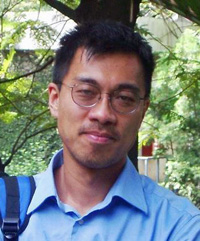 Tom Chou
Tom Chou
Webpage
Department of Biomathematics
Department of Mathematics
University of California Los Angeles
Life Sciences 5209
Los Angeles
CA 90095-1766
Lab: (310)-206-2787
Contact
I am interested in developing mathematical and physical models of stochastic processes applicable to subcellular and cellular biophysics. Some mathematically more formal research interests include determining uniqueness of stochastic inverse problems, such as branching processes. My applied research interests focus on developing mathematical models of viral entry and infection, cancer progression, and retinal detachments. My group is also investigating computational algorithms for the segmentation of images of tissues and bacterial cells.
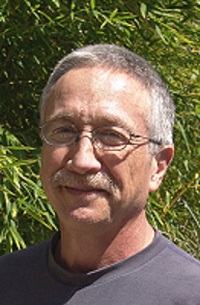 Jack Feldman
Jack Feldman
Interests: All meaningful actions of the brain result from the orchestrated activity of many neurons. A central problem confronting neuroscientists is to understand how molecular, synaptic, and cellular properties of individual neurons in densely interconnected networks result in behaviors ranging from hitting a baseball, playing the piano, reading or writing a book, taking an exam, regulating blood pressure or reproduction, or doing research. We have developed a model system that enables us to perform unique studies that directly address this problem. We investigate the neural basis for respiration in the isolated neonate rat brainstem, a preparation that offers simultaneous access to cellular, synaptic and network properties. We intend to understand how homeostatically regulated breathing movements occur, and in course, principles of integrative organization in the nervous system. We are presently testing our hypothesis that pacemaker neurons underlie the generation of respiratory rhythm. We have several projects looking at general mechanisms underlying the control of neuronal excitability (in functionally identified cells).
Educational Background:
Ph.D., Univeresity of Chicago
Work titles and affiliations:
UCLA Distinguished Professor, Neurobiology
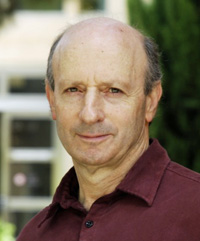 William Gelbart
William Gelbart
UCLA Department of Chemistry and Biochemistry
607 Charles E. Young Drive East, 90095-1569, Los Angeles CA310-825-2005
Contact
Starting in the late 1970s, I began working in the then-emerging field of “complex fluids,” concentrating over the following two decades on developing molecular theories of liquid crystals, polymer solutions, colloidal and nanoparticle suspsensions, self-assembling systems, and biological membranes. About 10 years ago I became intrigued by the physical basis of viral infectivity and, with my colleague Charles M. Knobler, established a laboratory to investigate a wide range of viruses outside their hosts and isolated in test tubes. We work on both DNA and RNA viruses, attempting to identify and explain the generic differences in their “live cycles” in terms of the differences between stiff linear genomes (double-stranded DNA) and flexible branched ones (single-stranded RNA). In particular, we have focused on the role of pressure in DNA packaging and delivery, and on the role of spontaneous self-assembly in the case of RNA viruses. A large part of our effort is devoted to understanding the physical forces driving the syntheses of viruses and virus-like particles (i.e., single-molecule-thick protein shells [capsids] containing nucleic acid), and their wrapping by phospholipid bilayer. Experimental methods include fluorescence microscopy and correlation spectroscopy, small-angle synchrotron X-ray scattering, and cryo-electron microscopy; theoretical approaches involve both analytical and computational treatments of RNA structure and of the statistical thermodynamics and kinetics of nucleocapsid self-assembly.
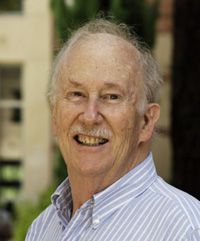 Charles Knobler
Charles Knobler
Young Hall 2077 D
Los Angeles, CA 90095-1569
Phone: (310) 825-4330
Fax: (310) 206-4038
Contact
My research, almost exclusively experimental, has been in soft condensed matter physics, a field that lies at the fuzzy border between physics, physical chemistry and chemical engineering. Much of the work concerned phase transitions and included studies of critical phenomena, nucleation and growth and two-dimensional systems, largely monolayers at the air/water interface.
About 10 years ago, however, I and my colleague Bill Gelbart made an abrupt change and began to focus on viruses. We have played a major role in the development of the new science of physical virology in which the properties of viruses – their structures, their assembly, their replication and their mode of infection – are examined both experimentally and theoretically in terms of general physical principles. Our research is broad based and involves studies of bacterial, plant and mammalian viruses.
 Thomas Mason
Thomas Mason
Webpage
UCLA Chemistry and UCLA Physics
Office: 3040 Young Hall
Phone: (310) 206-0828
Contact
I develop scientific principles for understanding complex structure and dynamics in multi-body interacting systems based on experiments involving dispersions of microscale to nanoscale particles, droplets, and polymers. Thermal motion of probe particles in polymer solutions and other complex fluids can be used to measure frequency dependent mechanical response through passive microrheology (Mason & Weitz, Phys. Rev. Lett. 1995; review Squires & Mason, Ann. Rev. Fluid Mech. 2010). Roughness controlled depletion attractions (Zhao & Mason, Phys. Rev. Lett. 2007) have enabled the experimental realization of near-ideal 2D systems of hard Brownian shapes; these systems are yielding new understanding of dense phases and transitions (see e.g. Zhao, Bruinsma, and Mason, PNAS 2011). I am also interesting in understanding how biomaterials, such as DNA and protein, adapt to artificial synthetic geometries. This has led to the creation of nanoscale virus-like droplets (VLDs) that are effectively viral protein cages that self-assemble in the aqueous phase around anionically stabilized oil nanodroplets (Chang et al., ACS Nano 2008).
 Mayank Mehta
Mayank Mehta
Webpage
UCLA Department of Physics and Astronomy
475 Portola Plaza, Box 951547
Los Angeles, CA 90095-1547
Contact
The mind is thought to be the emergent property of the activities of ensembles of neurons. The nature of these emergent properties and how they arise are unknown. This is the focus of our research. In particular, our current research addresses fundamental questions in Neurophysics.
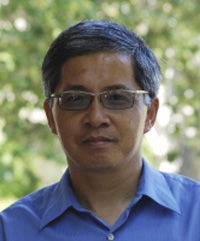 Jianwei (John) Miao
Jianwei (John) Miao
Webpage
UCLA Department of Physics and Astronomy
Office: 3-108 Knudsen
Phone: (310) 206-2645
Contact
My research interests lie in the interplay of physics, nanoscience and biology. I am particularly interested in developing new physical methods for quantitative imaging of nanoscale materials and biological specimens in three dimensions. I have played a major role in pioneering a three-dimensional imaging approach based upon the principle of using coherent diffraction in combination with a method of direct phase recovery called oversampling. I, together with my graduate students and postdocs, will continue to improve the spatial resolution of this imaging technique and pursue its applications in nanoscience and biology by using optical lasers, coherent X-rays and electrons.
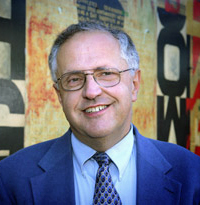
William I. Newman
Webpage
Department of Earth, Planetary, and Space Sciences
Department of Physics and Astronomy
Department of Mathematics
Office: 4640 Geology
Phone: 310-825-3912
Contact
Some of my work is in areas germane to theoretical biology, including population genetics, demographic models, dynamical systems theory applied to ecological systems, physiological models of brain tumors, stochastic models for animal populations, and the origin and evolution of life. (I created EPSS 3 "Astrobiology" many years ago and formerly taught courses dealing with the Origin and Evolution of Solar System and Earth. More recently, much of my research has focused on natural hazards, including climate change, and a course I created EPSS 13 "Natural Disasters.")
Education:
M.S. (1975) and Ph.D. (1979) in Astronomy and Space Science, Cornell University.
B.Sc. (First Class Honors, 1971) and M.Sc. (1972) in Physics, University of Alberta, Canada.
Honors:
Yuval Ne'eman Distinguished Lecturer in Geophysics, Atmospheric, and Space Sciences, Tel Aviv University, 2012
Morris Belkin Visiting Professor, Weizmann Institute of Science, Israel 2000-2001
Stanislaw Ulam Distinguished Scholar, Center for Nonlinear Studies, Los Alamos National Laboratory 1990-1991
John Simon Guggenheim Memorial Foundation Fellow, 1987
Member of the Institute for Advanced Study, Princeton 1978-80.
 Amy Rowat
Amy Rowat
Material properties of biological matter
1125 Terasaki Bldg
310-825-4026
Contact
Dr. Amy Rowat’s lab is interested in the material properties of biological matter, the origins of this behavior and role in physiology. Their research efforts largely focus on the shape and mechanical properties of the cell nucleus: they want to understand the role of nuclear physical and mechanical properties in whole cell mechanics and physiology and ultimately the physical and molecular origins of these properties. Rowat’s multidisciplinary team is addressing these questions by developing and merging methods in physics, engineering, cell and molecular biology. Developing a quantitative framework to understand mechanical transformations in cancer cells could provide a deeper understanding of cell nucleus shape and mechanics, as well as methods for early detection and mechanical-based therapeutic approaches. Amy Rowat is Assistant Professor in the Department of Integrative Biology & Physiology. She is also affiliated faculty with the UCLA Bioengineering Department, the Jonsson Comprehensive Cancer Center, and the Broad Stem Cell Research Center.
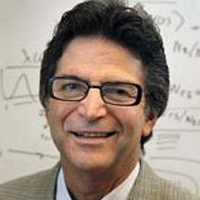 Joseph Rudnick
Joseph Rudnick
Department of Physics and Astronomy
Professor Emeritus
Theoretical Condensed Matter
Educational Background: Ph.D., UC San Diego, 1970
Research Interest: I do research on a variety of problems in condensed matter physics. My primary interests are in the general field of statistical mechanics. Following are some of the areas in which I've done research in the past few years.
-
Polymers and random walks:
I have looked at some properties of chain polymers, as modeled by the ordinary and self-avoiding random walk. Among these are the shapes and winding angle distributions of randomly coiled polymers. -
Statistical mechanics of finite systems:
I have been interested in the properties of finite systems near the bulk critical point. General strategies for the calculation of the behavior of such systems has been worked out, but there are interesting cases in which new approaches must be developed. I have worked out one such case - percolation on a finite lattice - and am looking at others.
 Samanvaya Srivastava
Samanvaya Srivastava
Webpage
UCLA Chemical and Biomolecular Engineering
Boelter Hall 5531-D
310-825-7563
Samanvaya is an Assistant Professor in the Chemical and Biomolecular Engineering at UCLA. He completed his undergraduate and master's work from the Indian Institute of Technology Kanpur and his Ph.D. with Lynden Archer from Cornell University, all in Chemical Engineering. Before coming to UCLA, he was a postdoctoral scholar with Matthew Tirrell at the Pritzker School of Molecular Engineering at the University of Chicago.
Samanvaya's research interests are in understanding the influence of intermolecular interactions on material structure and properties, with a broader aim to combine this fundamental understanding with molecular engineering and self-assembly processes to improve materials design. Samanvaya has received various awards, including the Austin Hooey Graduate Research Excellence Recognition Award at Cornell University (2013), the RSC Researcher Mobility Grant (2017), AIChE 35 under 35 (2020), and the NSF CAREER award (2020).
B.S. and M.S., Chemical Engineering, Indian Institute of Technology Kanpur 2009
Ph.D., Chemical Engineering, Cornell University, 2014
Postdoc, Pritzker School of Molecular Engineering, University of Chicago, 2014-2017
Assistant Professor, UCLA 2017-present
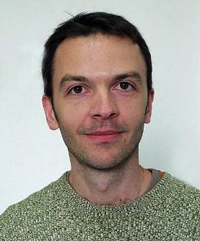 Yaroslav Tserkovnyak
Yaroslav Tserkovnyak
Knudsen Hall 6-137C
310-794-952
Contact
His current research interests can be found here: https://sites.google.com/site/tserkovnyak
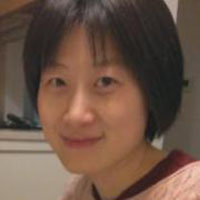 Shenshen Wang
Shenshen Wang
Office: Knudsen 3-128
Interests: I am interested in biophysical systems where collective responses emerge from a large and structured collection of interacting components. Two systems of main focus are the adaptive immune system (diverse populations of immune cells undergoing real-time evolution to fend off invaders and form memories) and active matter (a condensed matter system comprised of numerous self-driven subunits). Internally propelled or externally driven, these systems fall out of equilibrium, while being strongly nonlinear and heterogeneous in space and time. In addition, function and survival pose interesting constraints on their dynamics and organization. As a result, surprisingly complex (e.g. for adaptability) or simple (e.g. for robustness) behaviors arise that often defy intuition.
We aim to understand how biological success selects physical organizations, as well as how the physical structure feeds back on adaptation to environmental uncertainty. This understanding would guide novel design of vaccine strategies and adaptive materials.
Educational Background:
- Ph.D. in Physics (Theoretical Biophysics), University of California, San Diego, 2012
- M.Phil. in Physics, Hong Kong University of Science and Technology, 2007
- B.S. in Physics, Nanjing University, 2005
 Shimon Weiss
Shimon Weiss
Webpage
607 Charles E. Young Drive East
Los Angeles, CA 90095-1569
Contact
Shimon Weiss received his PhD from the Technion in Electrical Engineering in 1989. After a one year post doctorate at AT&T Bell Laboratories, where he worked on ultrafast phenomena in semiconducting devices, he joined Lawrence Berkeley National Laboratory as a staff scientist in 1990, where he continued to work on solid state spectroscopy. In 1994 he re-directed his interest to single molecule biophysics. In 2001 he joined UCLA Chemistry and Physiology departments and the California NanoSystems Institute.
 Gerard Wong
Gerard Wong
4121E Engineering V
UCLA Los Angeles, CA 90095
310-794-7684
Contact
Gerard Wong is interested in a multi-disciplinary approach to engaging unsolved problems in biology and biomedicine, combining physics, chemistry, and biology. Recent topics of research include physics of biological self assembly (ex: membranes, DNA, proteins), soft condensed matter physics of polymers, polyelectrolytes, liquid crystals, colloids, nanoparticles. Specific projects include antimicrobial peptides for antibiotic resistant pathogens, cell penetrating peptides for drug delivery, bacterial biofilms and sociomicrobiology, therapeutic strategies in cystic bifrosis, apoptosis proteins and cancer, femtosecond movies of hydration shells.
